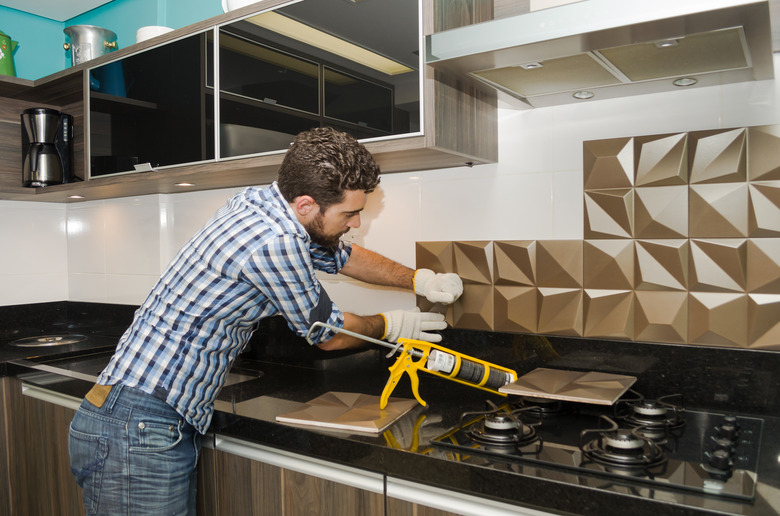How To Serve As Your Own General Contractor
When you are engaged in a large remodeling project, there are number of professional contracters who might be involved with the project, one of which is the general contractor. A general contractor (GC) is a management professional who oversees everything that has to do with a large remodeling or renovation project. But just as a skilled and energetic DIY might choose to perform carpentry or plumbing work themselves rather than hiring pros, there area number of reasons that a homeowner to take on the job of general contractor themselves rather than hiring.
For one thing, GCs usually make about 15 to 20 percent of the total cost of the project, so you may be able to forgo that expense and have more money to put into the actual project if you are able to manage the project yourself. As the GC, you become an integral part of the remodeling team—actually, you are in full charge if the team. This can provide a certain pride of accomplishment that simply writing a check for the project can't. And as the GC, you can make sure the project turns out exactly the way that you want it to.
Of course, for every yin there is a yang. Being a GC can be hard work. For many people in construction, it is there full-time job. And in some places they need a license to perform that job. (You won't need one to work on your own house, however.) Construction projects consist of dozens, sometimes hundreds, of moving parts and details. The GC has to handle them all while keeping the project on schedule and on budget. And, finally, the GC is the person the homeowner goes to when there is a question or a problem. If you are the GC, the questions and the complaints stop with you.
General Requirements for a GC
General Requirements for a GC
As mentioned, the GC wears a number of hats during a remodeling project, but in addition to the ability to complete clearly defined tasks, a good GC will have certain qualities that will help during the project.
- Well-organized: Large remodeling projects can get very complicated. For example, a major kitchen renovation can require a designer, a carpenter, an electrician, a plumber, a cabinet installer, a countertop installer, a flooring installer, a tile setter, drywaller, painter and an appliance installation company. Even an HVAC contractor may be involved. And the GC is responsible for scheduling these people and for purchasing all of the materials those tradespeople will use.
- Good communicator: Before and during a project, the GC will be speaking with, emailing and texting a number of different people from suppliers to subcontractors, so stating your wishes and questions in a clear, straightforward manner is important.
- Construction savvy: You don't need to be an expert, but you should have some idea about construction sequences and how to judge a quality job. For example, if you are opening or moving walls, that is the time when the plumber and electrician should do their work, not after the drywall is installed. Undestanding construction processes is essential if you want to fulfull the duties of general contractor.
Responsibilities of the GC
Responsibilities of the GC
A GC must move the project from the planning stage to completion. Every project is different, but here are some typical GC tasks:
- Obtaining building permits: The GC is responsible for securing the building permits. Check with the local building department to find out what is needed. In some communities, large projects require plans that were drawn up or reviewed by a registered architect or structural engineer.
- Scheduling building inspections: A building inspector, or inspectors, will visit the job site to determine if the work meets the building code. The inspections generally coincide with construction milestones, such as when the rough plumbing work is completed. As the GC, you will schedule the inspections at the appropriate times.
- Purchasing materials: The GC buys and arranges for the delivery of all building materials, fixtures and appliances. It is important to schedule deliveries so that the materials and the relevant subcontractors are on site at the same time. Check on delivery times as soon as possible, and order them so they will be on hand at the proper time. Some items, such as cabinets and windows, may take weeks to be delivered. Any customization adds to the delivery time.
-
Working with subcontractors: The GC interacts with the contractors hired to do the work in a number of ways:
Hiring the subs. Professional GCs usually have a list of contractors they can draw on when needed. As a homeowner/GC, you will have to do the work of finding and the subs and getting bids from them. You can find leads on contractors from friends and family. But don't overlook obvious sources, such as the supplier who are supplying materials and contractors already lined up to be part of the project. A good plumber, for example, may know a good electrician, who may know an excellent HVAC contractor. As GC, it will also be your responsibility to establish and sign contracts with all the subs.
Scheduling the subs. This is where knowing construction sequences comes in handy. The goal is to have the right tradesperson on site at the right time. Circumstances such as the weather, a late delivery, an unforeseen problem hidden in the walls, or a contractor that does not show up for work can disrupt the schedule and require you to reschedule the entire project at a moment's notice.
Inspecting the work. As the project progresses, you will need to make sure the work is done to your satisfaction. There is no need to spend all day, every day, on the job site, but do plan on inspecting the work after each day's activity. If you are uncomfortable challenging a pro, seek the advice (or hire) a construction manager who can assess the work for you. A friend or relative with a construction background is ideal. Another option is a retired contractor.
Paying the subs. You will need to set up a payment plan with the contractors you hire. Withhold the final payment until you are satisfied with the completed work—this should be a condition of the contracts you have signed with each of the subcontractors.
Obtain lien waivers. A lien waiver is a document that states that the subcontractor has been paid. A signed waiver means the contractor cannot place a lien on your home for nonpayment. This is normally signed at the same time final payment is made, sometimes as part of the payment reciept you receive from the contractor.
The Bottom Line
The Bottom Line
Acting as your own GC can be difficult, but it can also be a satisfying and cost-saving experience that can save you as much as 20 percent of the overall cost of a major remodeling project. If you decide to serve the role of general contractor, go into it with your eyes open and do your homework. If you do decide to take this duty, remember that decisions you make at one phase of the project often impact the entire project. Keeping this in mind can help the project run as smooth as possible.



